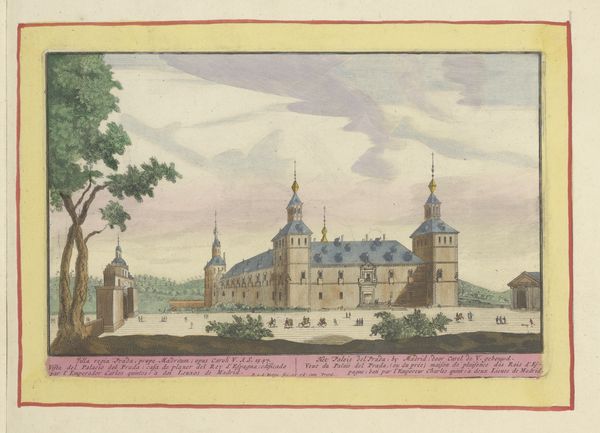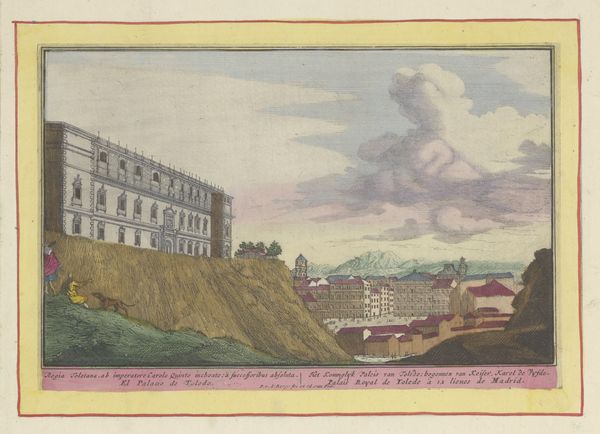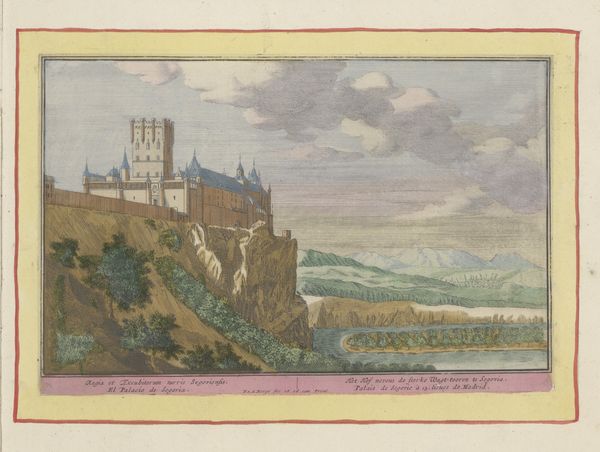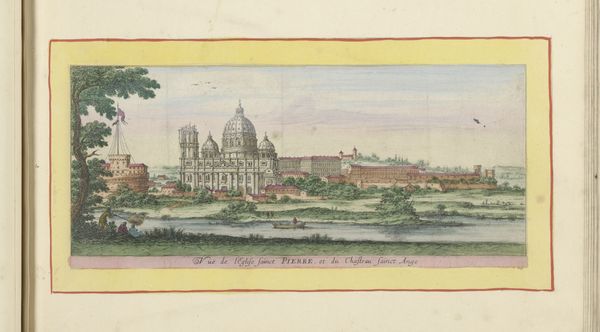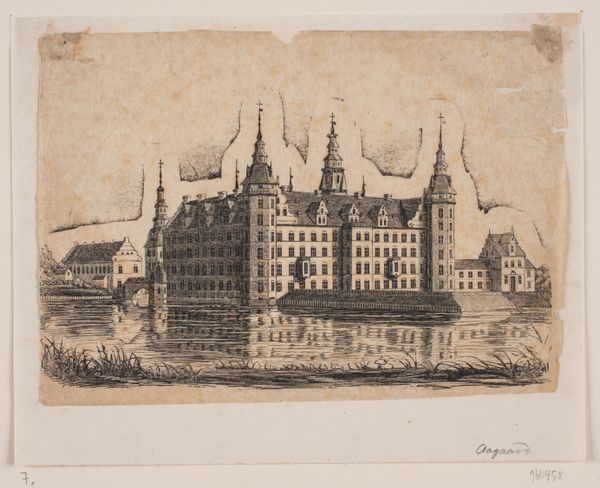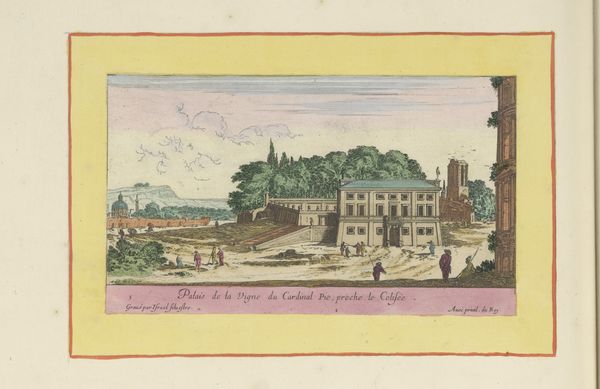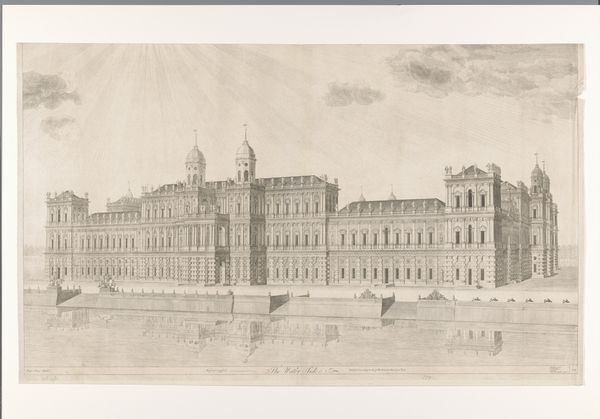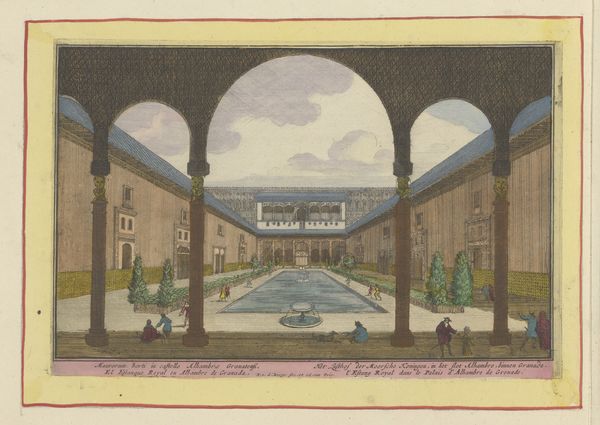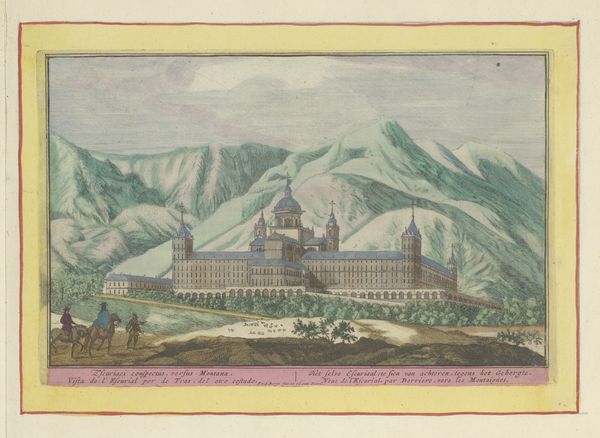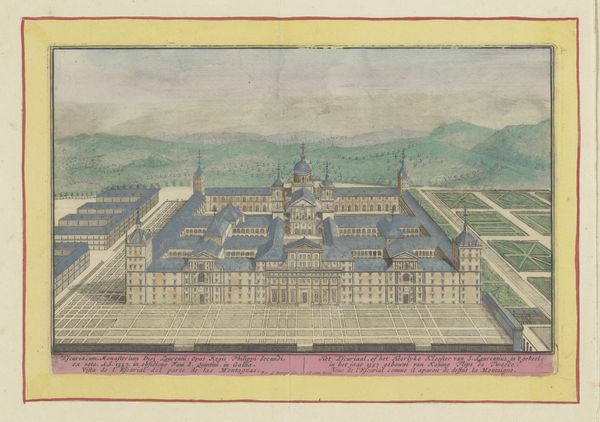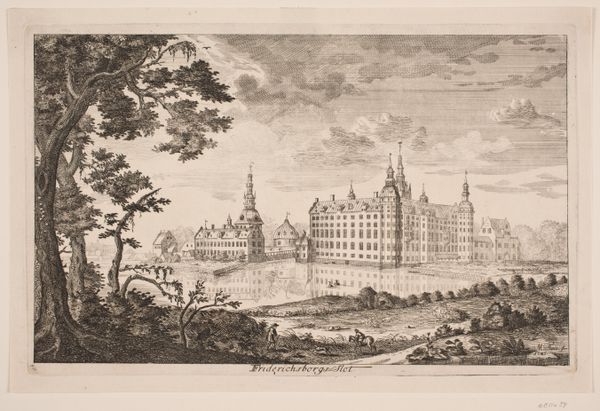
drawing, print, watercolor
#
drawing
#
water colours
#
baroque
# print
#
landscape
#
watercolor
#
coloured pencil
#
cityscape
#
watercolor
Dimensions: height 165 mm, width 254 mm
Copyright: Rijks Museum: Open Domain
Editor: Here we have "View of the Rear of El Escorial," a watercolor drawing by Pieter van den Berge, dating sometime between 1694 and 1737. The building looks so monumental, dominating the landscape, yet the colours are delicate. How should we interpret that contrast? Curator: Well, consider the socio-political context. El Escorial was not just a monastery; it was a symbol of Habsburg power and Catholic orthodoxy during the Spanish Golden Age. Van den Berge, working much later, presents a view from the rear, softening that overt power. Do you think that perspective diminishes the symbolic weight of the building? Editor: That’s interesting! The rear view almost feels like an invitation to consider what’s *behind* the facade, perhaps even critique it. So the location and time the work was created shapes how people perceived it, which then shifts our reading. Curator: Precisely. These landscapes were often commissioned and circulated as visual propaganda. Even what looks like a straightforward depiction contains layers of intended meaning and subtly changed in time. Does knowing that change the way you see the small figures populating the foreground? Editor: It does! They’re almost dwarfed, and knowing that it’s the “rear” view adds a dimension. Instead of reverence, perhaps there’s a commentary on the disconnect between the powerful and the everyday. Curator: It suggests a tension, doesn’t it? Landscape becomes a stage for considering those relationships of power, rendered accessible through the medium of watercolor. Editor: I'd never considered the landscape as political critique quite so directly. Curator: It's a good reminder that art, especially public art or widely disseminated imagery, always plays a role in broader social and cultural narratives. The question is to look beyond the aesthetic into the context in which it emerged. Editor: It's amazing how seeing a work in its historical setting allows you to unearth hidden perspectives and layers of meaning. Curator: Indeed, context allows us to recognize a seemingly objective view may, in fact, embody social discourse and shifting interpretations across time.
Comments
No comments
Be the first to comment and join the conversation on the ultimate creative platform.
